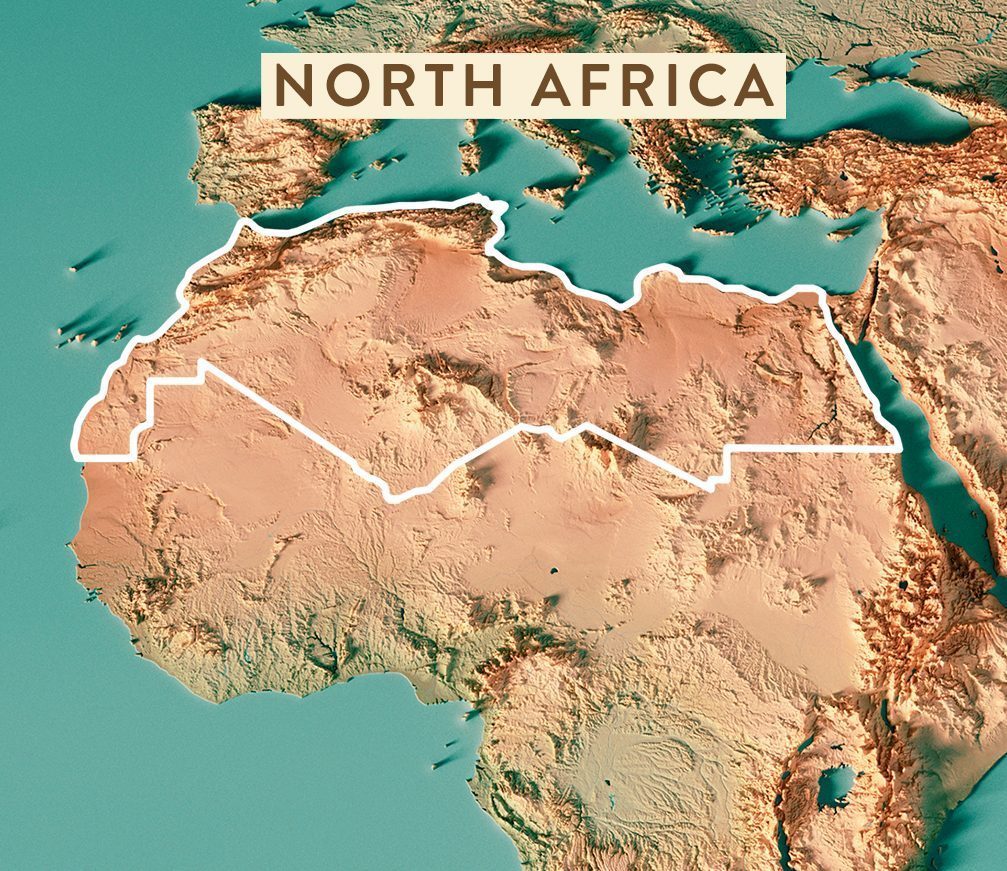CULTIVARS OF THE WORLD
VARIETAL BIODIVERSITY
There are different types of extra virgin olive oil, with countless subtle gradations of flavour and fragrance.
This sensory richness originates from the vast variety of olive cultivars around the world,
which differ in form, physiology and cultivation properties depending on the geographical areas where they are grown,
and which give of their best in different parts of the planet.
Let our passion for oil be your guide to discovering
the unique characteristics of the most widely grown cultivars.

Algeria
Like Tunisia and Morocco, Algeria is a big producer. Since 1999, the land dedicated to olive growing has more than tripled, raising Algerian olive output to heights of 90 thousand tonnes/year. In quality terms, a great deal is being invested in training and technological improvements to cover all phases of production, from harvesting to transformation, as well as techniques for storage of the oil itself.
Cultivar of Algerian origin widely grown in the eastern Constantine area and southwards towards Tunisia.
Use: dual purpose.
Sensory profile: light bitter and peppery and intense fruity components with overtones of tobacco.
Cultivar of Algerian origin widely grown in the centre and east of the country.
Use: for oil production.
Sensory profile: light peppery and fruity components with overtones of almond.
Cultivar of Algerian origin widely grown in the west of the country, accounting for 20-25% of output.
Use: dual purpose.
Sensory profile: light peppery and fruity components with overtones of almond.
Egypt
Concentrating mainly on the production of table olives, Egypt leads the world in the growing of olives in arid and semi-arid conditions, with rainfall of less than 80 mm/year. In order to overcome this problem, Egypt is one of the few countries to have adopted micro-irrigation systems.
Cultivar of Egyptian origin widespread in the Siwa and northern Sinai area.
Use: dual purpose.
Sensory profile: light peppery and fruity components with overtones of almond. Use: dual purpose. Sensory profile: light peppery and fruity components with overtones of almond.
Libya
Although oil-growing in the country has ancient origins, current output relies on the trees planted by the Italians in the 1930s, during the colonial period. Since the fall of the regime, the new government has adopted development plans to boost olive oil exportation, by improving the quality of olive and olive oil output in order to increase the total value of exports.
Cultivar of Libyan origin widely grown in the Misrata area.
Use: for oil production.
Sensory profile: light peppery and fruity components with overtones of fresh almond.
Morocco
80% of the olive trees in the country are clones of Spanish and Greek cultivars, very well suited to Moroccan conditions. Thanks to the great adaptability of these varieties, olives are grown virtually nationwide, except for the zone along the Atlantic Ocean. About 75% of output is used for oil production; the remainder consists of table olives, exported worldwide.
96% of the native olive heritage, found across the country.
Use: dual purpose.
Sensory profile: light fruity, pepper and bitter components with overtones of apple and tomato.
Tunisia
Olive production accounts for about 15% of national agricultural output. Olives are a crucial factor for the Tunisian economy, also as a means of combating the serious problem of rural population loss and migration to the cities. Total olive output derives from both native cultivars and a number of imported varieties, mainly Italian and Greek, which have adapted well to Tunisian conditions.
Cultivar of Tunisian origin widely grown in the Soliman, Cap Bon, Ariana and Mehrine area.
Use: dual purpose.
Sensory profile: moderate fruity and peppery and light bitter components with flavours of walnut, green tomato and mint.
Cultivar of Tunisian origin widely grown in the north-eastern, central-coastal, southern and extreme southern zones of Tunisia. 60% of national output.
Use: for oil production.
Sensory profile: moderate peppery and fruity components with notes of almond and apple.
Cultivar of Tunisian origin widely grown in the north of the country.
Use: dual purpose.
Sensory profile: moderate peppery and fruity components with flavours of lettuce and grass.


